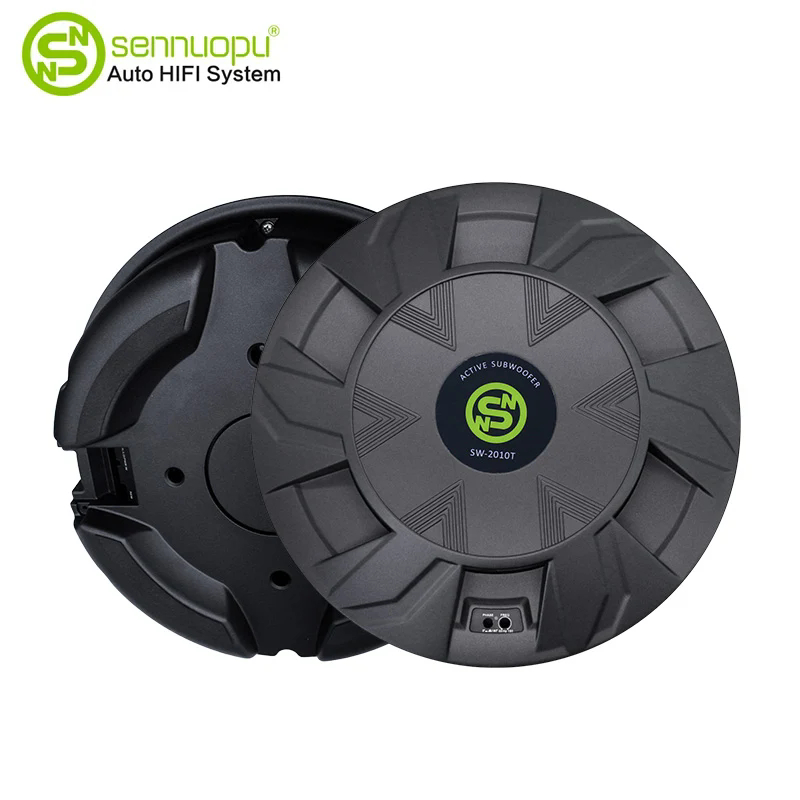How Can a Car Subwoofer Transform In-Car Audio Experience?
2025-09-15
In today’s automotive world, the driving experience is not only defined by performance and comfort but also by the quality of in-car audio. Many car owners underestimate the impact of a high-quality subwoofer on their overall listening experience. A car subwoofer is designed to reproduce low-frequency sounds, adding depth and clarity to music that standard car speakers often fail to deliver.
A car subwoofer is specifically engineered to handle bass frequencies ranging from 20Hz to 200Hz. Unlike regular speakers, subwoofers are optimized for low-frequency reproduction, providing the deep, powerful tones that give music its fullness. Without a subwoofer, music can feel thin or flat, missing the punch that brings genres like hip-hop, EDM, and rock to life.
Key benefits of installing a car subwoofer include:
-
Enhanced audio clarity: By offloading bass reproduction to a dedicated speaker, your mid and high frequencies remain clear and distortion-free.
-
Improved sound balance: Subwoofers ensure that the full range of audio is heard as intended by the producer or artist.
-
Greater listening satisfaction: Deep bass contributes to a more immersive, theater-like experience inside your vehicle.
Technical Insights into Car Subwoofers
To make an informed choice, understanding a subwoofer’s specifications is crucial. Here’s a detailed overview:
| Parameter | Description |
|---|---|
| Power Handling | Rated in watts (RMS & Peak); determines how much power the subwoofer can manage without damage. |
| Impedance | Measured in ohms; affects how the subwoofer interacts with the amplifier. Lower impedance can draw more power. |
| Frequency Response | Range of sound the subwoofer can reproduce. Most car subwoofers cover 20Hz–200Hz effectively. |
| Sensitivity | Measures efficiency; higher sensitivity requires less power to achieve high volume. |
| Voice Coil | Single or dual; affects wiring flexibility and performance. |
| Enclosure Type | Sealed, ported, or bandpass; each influences bass quality and volume output. |
A subwoofer’s enclosure is as critical as the speaker itself. Sealed boxes provide tight, accurate bass, ideal for jazz or classical music, while ported boxes deliver louder, more resonant bass suited for electronic or rock genres.
How Does a Car Subwoofer Work to Enhance Sound?
Car subwoofers operate by converting electrical signals into mechanical movement, pushing air to create sound waves. The larger the speaker cone and voice coil, the more air is displaced, resulting in more powerful bass. Proper installation ensures that the subwoofer complements your vehicle’s acoustics rather than overpowering it.
Installation Considerations:
-
Placement: Subwoofers are often installed in trunks or under seats, but positioning can affect sound quality. Experimenting with placement ensures optimal resonance and minimal rattling.
-
Amplification: Most subwoofers require an external amplifier. Matching the subwoofer’s RMS power with the amplifier ensures clear, undistorted sound.
-
Wiring: Using high-quality cables reduces signal loss and interference, preserving audio fidelity.
A well-installed subwoofer transforms the entire audio spectrum, allowing the listener to feel the music as much as hear it. From subtle rumble in cinematic tracks to full-throttle bass drops in electronic music, the difference is immediately noticeable.
What to Look for When Choosing the Right Car Subwoofer?
Selecting a subwoofer involves balancing several factors: power, size, enclosure, and compatibility with your car’s audio system. Here are essential considerations:
-
Size: Common sizes range from 8 to 15 inches. Larger subwoofers produce deeper bass but require more space.
-
Power Handling: Ensure the subwoofer can handle the amplifier’s output. Underpowered units may distort or overheat.
-
Enclosure Type: Choose between sealed (tight bass) or ported (louder, booming bass) enclosures based on your musical preference.
-
Sensitivity Rating: High-sensitivity subwoofers can achieve high volume with less power, beneficial for systems with limited amplification.
Common Questions About Car Subwoofers
Q1: Can I install a subwoofer in any vehicle?
A1: Yes, most vehicles can accommodate a subwoofer, but space and electrical system limitations must be considered. Compact cars may require smaller or custom enclosures, while larger vehicles can support full-sized subwoofers with dedicated amplifiers.
Q2: Will a subwoofer drain my car battery?
A2: Not if installed correctly. Subwoofers draw power from the car’s electrical system, and with an appropriate amplifier and wiring, they will not significantly affect battery life. Heavy use at high volumes may require a capacitor or upgraded alternator to maintain consistent power.
Why Sennuopu Car Subwoofers Stand Out
Sennuopu has built a reputation for delivering premium car subwoofers designed to meet the needs of audiophiles and casual listeners alike. Combining high-quality materials, precision engineering, and innovative design, Sennuopu subwoofers provide robust, distortion-free bass that enhances any in-car audio system. Whether you are upgrading your stock system or designing a full custom setup, Sennuopu ensures reliability, performance, and value.
From sealed enclosures delivering precise bass to ported designs for booming impact, Sennuopu offers a range of options to suit all musical tastes. Installation is simplified with comprehensive guides, and the components are engineered to integrate seamlessly with your vehicle’s electrical system.
For anyone seeking to elevate their driving soundtrack, a Sennuopu car subwoofer is a sound investment. Explore the full range today and feel the difference. Contact us for personalized recommendations, installation guidance, or to discuss which Sennuopu subwoofer best fits your vehicle.
